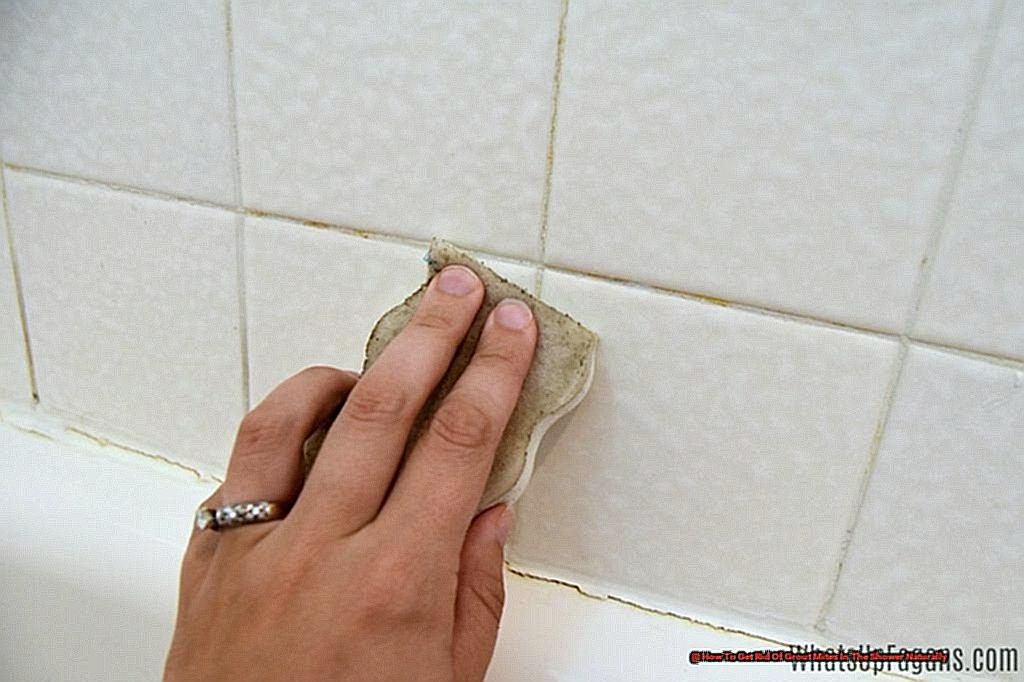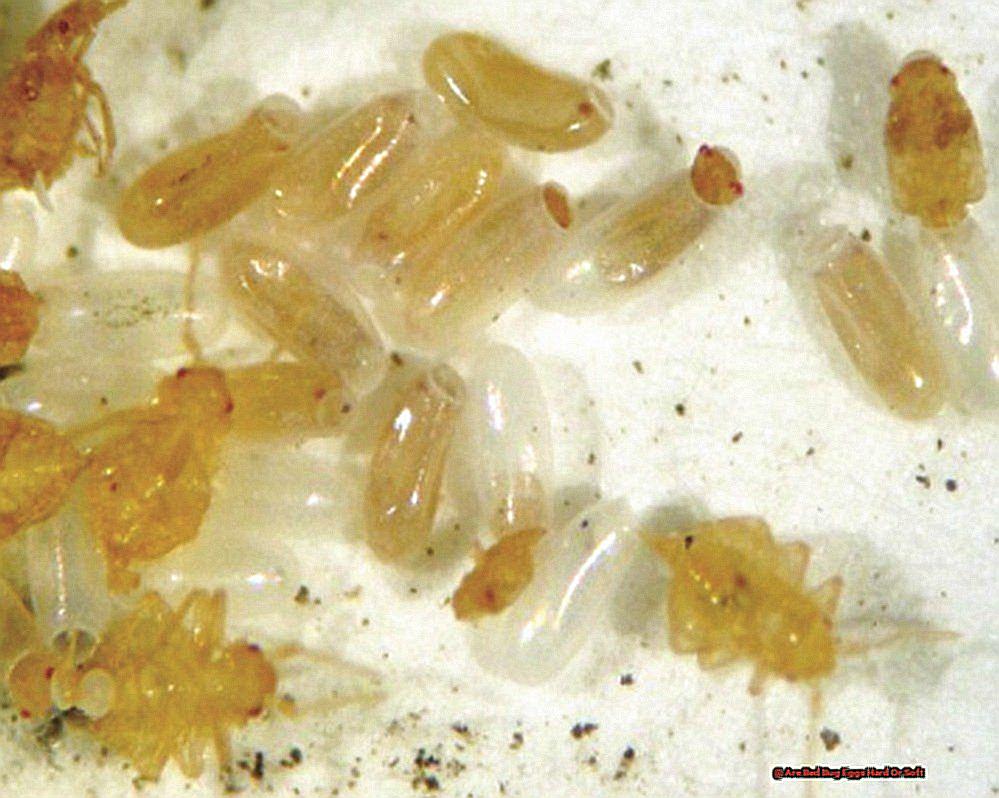If you’ve noticed a musty scent reminiscent of rotten coconuts when you disrupt these little critters, then you know exactly who your invisible adversaries are. The quest to reclaim your space does not have to rely on harsh chemicals or expensive exterminators.
In today’s post, we’re going back to the roots, embracing methods that are as gentle on the earth as they are effective at sending these pests packing. We’ll explore strategies that use everyday household items and simple practices to create an environment that’s inhospitable to odorous house ants.
Let’s delve into the heart of the matter with a clear roadmap:
- Understanding Your Antagonists: Learning about odorous house ants and why they’ve chosen your home.
- Kitchen Alchemy: Concocting safe and simple mixtures to deter these six-legged invaders.
- Barrier Tactics: Practical tips for creating natural ant barriers to keep them at bay.
- Clean Sweep: Maintaining a spick-and-span home to remove the allure for future ant explorers.
- Outdoor Diplomacy: Strategies to address the root of the problem, where the outdoors meets your front door.
Join me in this journey to naturally harmonize your living space and say farewell to odorous house ants without causing a fuss for Mother Nature.
Table of Contents
- 1 How To Get Rid Of Odorous House Ants Naturally?
- 1.1 Eliminate Entry Points
- 1.2 Maintain a Spotless Environment
- 1.3 Natural Repellents and Deterrents
- 1.4 Bait and Trap
- 1.5 Ensure to: Fix leaks: Repair any plumbing issues to remove moisture sources. Dehumidify: Use dehumidifiers in damp areas to make the environment less appealing.
- 1.6 Plant deterrents: Mint: Plant mint around the home as it’s a natural ant deterrent. Cinnamon: Sprinkle ground cinnamon at entry points. Disturb Their Trails Disrupt ant pheromone trails with: Chalk: Draw lines with chalk where ants travel; the calcium carbonate disrupts their trail. Citrus peels: Scatter around the home’s perimeter to interfere with scent trails. The table below summarizes the methods and ingredients: Action Method Ingredient/Tool Seal Entrances Apply sealant to cracks Caulk, weather-stripping Clean Up Regular sweeping and wiping Clean cloth, natural cleaners Apply Repellents Apply deterrent substances Vinegar, essential oils, diatomaceous earth Set Baits Create bait stations Boric acid, sugary mixtures, cornmeal Control Moisture Fix leaks, dehumidify spaces Tools for repair, dehumidifier Plant Deterrents Plant or sprinkle deterrents Mint plants, ground cinnamon Disrupt Trails Interfere with scent trails Chalk, citrus peels The Dangers of Chemical Pesticides Using chemical pesticides to address odorous house ant infestations can inadvertently introduce a host of health hazards into your home. These risks can range from acute poisoning to long-term health effects, impacting both humans and pets. Short-Term Exposure Risks Route of Exposure Potential Effects At-Risk Groups Inhalation Irritation of airways, dizziness, headache Children, elderly, asthmatics Dermal contact Rashes, burns, allergic reactions Pets, young children Ingestion Nausea, vomiting, poisoning Children, pets Long-Term Health Implications
- 1.7 Environmental and Indirect Health Consequences
- 2 Identifying the Source of Infestation
- 3 Keeping Your Home Clean and Ant-Free
- 4 Natural Deterrents for Odorous House Ants
- 5 The Power of Diatomaceous Earth Against Ants
- 6 Using Bait Stations to Eliminate Ant Colonies
- 7 Conclusion
How To Get Rid Of Odorous House Ants Naturally?
Tackling an invasion of odorous house ants without leaning on synthetic chemicals can be done effectively with a few natural strategies.
Eliminate Entry Points
Seal cracks and crevices where ants may enter using sealants. Focus on areas such as window sills, doorways, and where utilities enter the home.
Maintain a Spotless Environment
Regular cleaning is key to remove food sources. Ensure to:
- Wipe down surfaces: Keep kitchen counters and dining areas clean of any food residue.
- Dispose of waste properly: Secure the lid on trash bins and compost containers.
- Store food securely: Use airtight containers for pantry items, especially sweets.
Natural Repellents and Deterrents
Apply natural substances that repel ants:
- Vinegar: Clean surfaces with a solution of equal parts water and vinegar.
- Essential oils: Cotton balls with peppermint oil can deter ants when placed in problem areas.
- Diatomaceous earth: Sprinkle food-grade diatomaceous earth along ant trails and entry points.
Bait and Trap
Create natural bait stations using:
- Boric acid: Mix with sugary substances to attract ants. They carry it back to the colony, reducing numbers over time.
- Cornmeal: Although not toxic, ants can’t digest it, which may control their numbers.
Water Control
Ensure to:
- Fix leaks: Repair any plumbing issues to remove moisture sources.
- Dehumidify: Use dehumidifiers in damp areas to make the environment less appealing.
Cultivate a Hostile Environment for Ants

Plant deterrents:
- Mint: Plant mint around the home as it’s a natural ant deterrent.
- Cinnamon: Sprinkle ground cinnamon at entry points.
Disturb Their Trails
Disrupt ant pheromone trails with:
- Chalk: Draw lines with chalk where ants travel; the calcium carbonate disrupts their trail.
- Citrus peels: Scatter around the home’s perimeter to interfere with scent trails.
The table below summarizes the methods and ingredients:
Action
Method
Ingredient/Tool
Seal Entrances
Apply sealant to cracks
Caulk, weather-stripping
Clean Up
Regular sweeping and wiping
Clean cloth, natural cleaners
Apply Repellents
Apply deterrent substances
Vinegar, essential oils, diatomaceous earth
Set Baits
Create bait stations
Boric acid, sugary mixtures, cornmeal
Control Moisture
Fix leaks, dehumidify spaces
Tools for repair, dehumidifier
Plant Deterrents
Plant or sprinkle deterrents
Mint plants, ground cinnamon
Disrupt Trails
Interfere with scent trails
Chalk, citrus peels
The Dangers of Chemical Pesticides
Using chemical pesticides to address odorous house ant infestations can inadvertently introduce a host of health hazards into your home.
These risks can range from acute poisoning to long-term health effects, impacting both humans and pets.
Short-Term Exposure Risks
Route of Exposure
Potential Effects
At-Risk Groups
Inhalation
Irritation of airways, dizziness, headache
Children, elderly, asthmatics
Dermal contact
Rashes, burns, allergic reactions
Pets, young children
Ingestion
Nausea, vomiting, poisoning
Children, pets
Long-Term Health Implications
Chemical pesticides can have chronic impacts, with some linked to severe health conditions:
- Cancer: Some ingredients in pesticides are classified as carcinogens.
- Reproductive Issues: Exposure may affect fertility and fetal development.
- Neurological Damage: Certain chemicals are neurotoxins that can impair brain function.
Environmental and Indirect Health Consequences
- Ecosystem Disruption: Beneficial insects like bees can be harmed, affecting pollination.
- Water Contamination: Pesticides can leach into waterways, posing risks to aquatic life.
- Food Safety: Residue on surfaces may contaminate food, leading to inadvertent ingestion.
Identifying the Source of Infestation
Unwanted guests like odorous house ants can be quite the bother, creeping into our homes uninvited.
If you’re on the hunt to find out where these little critters are sneaking in, you’re at the right spot. Let’s shed some light on how to track them down.
Step
Action
Tools/Tips
1
Observe Ant Trails
Patience; track back to nest
2
Inspect for Gaps
Look at walls, windows, and utility lines
3
Use Sweet Lures
Honey or sugar water to reveal paths
4
Try Bait Stations
Ant traps to identify entry points
5
Seal Entry Points
Use caulk or sealant on cracks
Armed with this know-how, you’re well on your way to declaring your home an ant-free zone.
Keeping Your Home Clean and Ant-Free
Odorous house ants, those diminutive scoundrels, sneak into homes seeking sustenance and shelter. Their presence is no trifling matter, for not only do they cause a nuisance, but they can also spread unwelcome germs. Here’s how you can show them the door with a smattering of natural and effective strategies:
Barriers and Deterrents:
Essential Oils
Ants find the scent of peppermint, tea tree, and eucalyptus quite disagreeable. A few drops in water make an excellent spray.
Vinegar Solution
A potion of equal parts water and vinegar will erase the pheromone trails, leaving ants befuddled.
Soap and Water Spray
A spritz of soapy water acts as a non-toxic insecticide, dealing a swift blow to these tiny invaders.
Baits and Traps:
Sugar and Borax Bait
Mix borax with sugar; ants tote this lethal snack back to their nest, sharing the grim fate with their kin.
Honey Borax Bait
Ants can’t resist the sweet allure of honey, but combined with borax, it turns into their undoing.
Greasy Borax Bait
A concoction of borax mixed with something greasy, like peanut butter, targets protein-seeking ants.
Preventative Measures:
- Inspect and Repair: Scout out cracks and crevices, and seal them up tight to keep future ant armies at bay.
- Tidy Up: A spotless abode leaves ants with nowhere to dine, pushing them to look elsewhere for their picnics.
- Ant-repellent Plants: Embrace the power of nature with plants like mint, which is as delightful to us as it is troublesome to ants.
By wielding these natural remedies, you’ll be well on your way to banishing odorous house ants from your sanctuary.
Natural Deterrents for Odorous House Ants
Odorous house ants, those uninvited guests with a penchant for sweet treats, can be ousted from your home using natural methods that are both safe and straightforward. Here’s how to send them packing:
Essential Oils: A Potent Repellent
Aromatic oils are not just for aromatherapy; they are formidable foes against ant invasions. Dab cotton balls with peppermint, tea tree, or lemon oil and place them at entry points. The strong scents overwhelm the ants’ senses, effectively barring their way.
Vinegar: The Acidic Antagonist
Vinegar isn’t just a culinary staple but also a potent cleaning agent that disrupts ants’ pheromone trails. A solution of equal parts water and vinegar can clean surfaces and leave a scent that’s ant-repellent.
Diatomaceous Earth: The Minuscule Sharpshooter
This fine powder is made from fossilized algae. Sprinkle it around the perimeter of your home, and its microscopic sharp edges will deter ants without harm to pets or children.
Borax and Sugar Bait: A Sweet Deception
Mixing borax with sugar creates a bait that’s irresistible to ants, but lethal once ingested. Place this mixture near ant trails and wait for it to disrupt the colony.
Cinnamon: The Spicy Barrier
Ground cinnamon or its oil can act as a natural barrier. Sprinkle or spray it in areas where ants enter and watch it act as a natural deterrent.
The Power of Diatomaceous Earth Against Ants
Ant infestations in the home can be a real bother, but fear not, for diatomaceous earth (DE) comes to the rescue as a champion in the battle against these tiny invaders. Here’s the lowdown on how DE sends ants packing:
Mechanical Marvel
Diatomaceous earth isn’t your typical insecticide; it’s a mechanical killer. This means it doesn’t poison the ants but rather uses the sharp edges of its microscopic fossils to puncture the exoskeletons of the ants.
Once their armour is breached, the DE absorbs the oils and fats from the cuticle of the ants’ exoskeletons, leading to dehydration and, ultimately, their demise.
Safe for the Family
You can breathe easy when using DE around your homestead. It’s a natural substance that’s harmless to humans and furry friends alike when used correctly.
Although, it’s wise to don a mask when applying it, as the fine dust can be a bother for your lungs.
Application Tips
To show ants the door, sprinkle DE in areas where they frequent – think window sills, doorways, and any nooks and crannies where they’re setting up shop.
But remember, consistency is key; you’ll need to reapply after any damp weather or if you notice the powder has been disturbed.
Here’s a handy table summarising application methods and considerations:
Location
Application Method
Considerations
Indoors
Sprinkle on ant trails
Avoid inhaling dust
Outdoors
Spread around the perimeter
Not effective when wet
Damp Areas
Use DE spray solution
Reapply after rain
Using Bait Stations to Eliminate Ant Colonies
Bait stations are clever devices in the war against ant invasions, offering a strategic and environmentally gentle approach to ousting these six-legged intruders from your home.
They act as Trojan horses, disguising lethal treats that ants can’t resist. Here’s how they turn the tide in your favour:
Crafting the Bait:
A concoction of natural ant killers like borax or baking soda is mixed with tempting morsels such as sugar or peanut butter.
This deadly buffet is the key to the bait station’s success.
Ants’ Fatal Feast:
Worker ants, lured by the bait’s siren call, transport these deceptive delicacies back to their colony.
Unbeknownst to them, each morsel is a ticking time bomb for the colony’s survival.
The Queen’s Last Supper:
The ultimate target is the queen. Once she partakes in the bait, her reign—and the colony’s future—comes to an abrupt end.
Bait stations outsmart ants naturally, without resorting to the chemical warfare that can harm the environment.
Plus, they avoid the creation of “superbugs”—ants that have evolved resistance to common pesticides.
Alternative Natural Remedies:
- Borax and boric acid: The bane of ant colonies when mixed with sweeteners.
- Homemade bait stations: A DIY solution using common household ingredients.
- Baking soda: The kitchen staple that doubles as an ant nemesis.
- Carbonated water: A bubbly end to the ant’s subterranean escapades.
- Diatomaceous earth: A previous section detailed its desiccating prowess.
- Soapy water: A simple yet effective ant deterrent.
- Boiling water: The heat is on for the ant’s underground fortress.
Avoiding Harsh Chemicals:
Steer clear of bleach and similar harsh cleaners. They’re no friends to the earth you’re trying to protect.
The Professional Touch:
For a dramatic finale, professionals can cast a metal demise into the ant’s labyrinthine lairs, ensuring no ant tells the tale.
Here’s a handy table to compare the natural remedies:
Remedy
Ingredient
Method
Bait Stations
Borax/Baking Soda
Mix with sugar/peanut butter; place along trails
DIY Bait
Borax/Boric Acid
Create homemade stations with sweet mixtures
Quick Fix
Soapy Water
Spray directly on ants and their trails
In essence, bait stations are a sly and sustainable method to eradicate ant colonies. They don’t just kill ants; they collapse entire colonies by turning workers into unwitting executioners of their own queen.
Conclusion
In conclusion, the battle against odorous house ants can be won with patience, vigilance, and a return to natural methods that are kind to both our health and the environment.
By understanding the habits and preferences of these persistent intruders, we can create a multi-layered defense that is both effective and sustainable. Sealing entry points, maintaining cleanliness, using natural repellents, and addressing moisture issues are all key tactics in our arsenal.
Additionally, setting bait stations and cultivating a garden with plants that deter ants can further reinforce our efforts. It’s important to remember that while chemical pesticides offer a quick fix, they come with significant risks to health and environmental balance.
Instead, by following the natural strategies outlined, we can achieve a harmonious and ant-free home.






